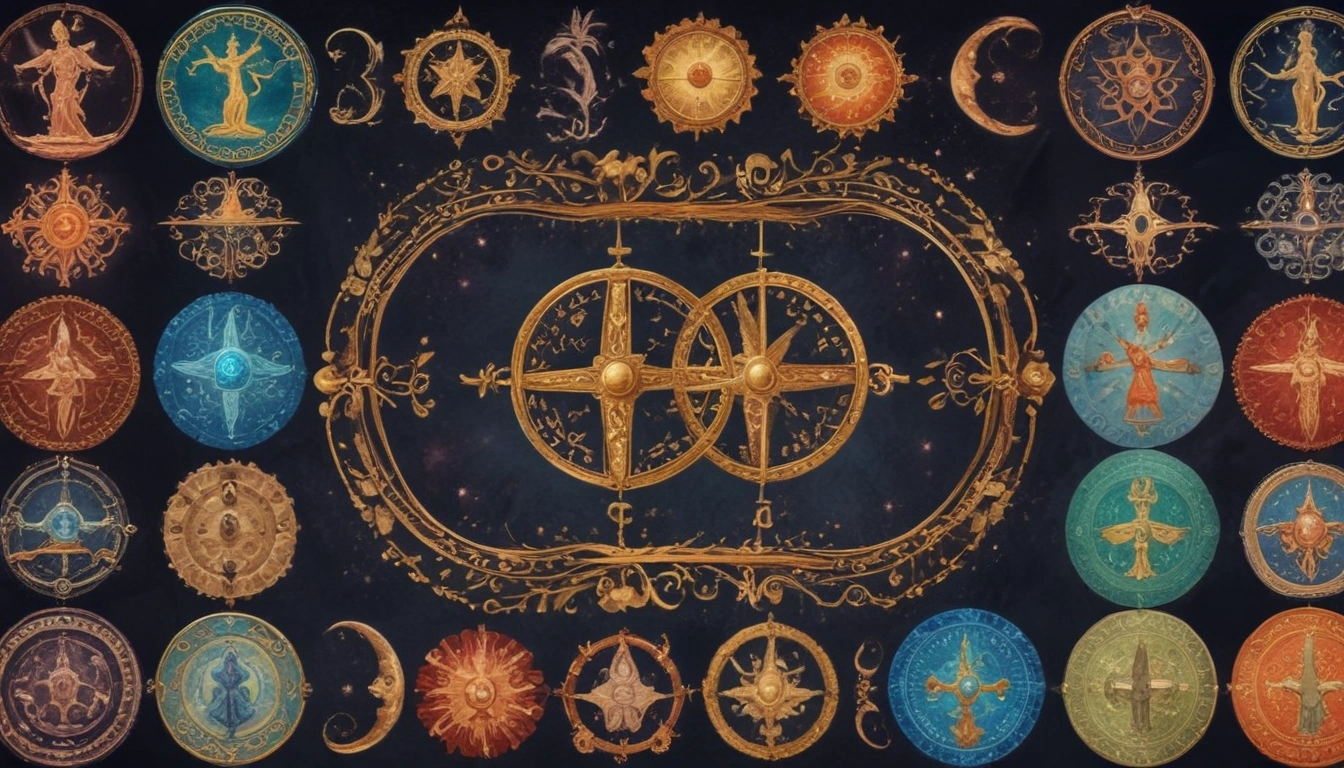Top 10 Symbols of Balance Throughout History
Throughout history, humans have sought to understand and represent the concept of balance in various ways. From ancient civilizations to modern times, symbols of balance have been used in art, architecture, religion, and philosophy. In this blog post, we’ll explore the top 10 symbols of balance throughout history and their significance in different cultures.
1. Yin and Yang

The Yin and Yang symbol, originating from ancient Chinese philosophy, is perhaps the most well-known symbol of balance. It represents the idea that opposite forces, such as light and dark, masculine and feminine, and positive and negative, are interconnected and complementary. The curved line separating the two halves symbolizes the dynamic nature of balance, with each side containing a small dot of the opposite color, indicating that nothing is absolute.
2. The Scales of Justice

The scales of justice, often depicted as a balanced beam scale held by the Greek goddess Themis or the Roman goddess Justitia, symbolize the impartial administration of law. The two pans of the scale represent the weighing of evidence and arguments, with the goal of achieving a fair and balanced outcome. This symbol is still widely used in legal systems around the world.
3. The Caduceus
The caduceus, a staff with two intertwined snakes and wings at the top, is a symbol associated with medicine and healing. In ancient Greek mythology, it was carried by Hermes, the messenger god, and later became a symbol of balance and negotiation. The two snakes represent opposing forces, such as health and illness, while the wings symbolize the elevated status of the medical profession.
4. The Lotus Flower

In Eastern religions, such as Hinduism and Buddhism, the lotus flower is a symbol of balance, purity, and enlightenment. The flower grows from the muddy bottom of a pond, rising through the water to bloom on the surface, untouched by the dirt below. This symbolizes the journey of the soul from the material world to spiritual awakening, maintaining balance and purity along the way.
5. The Equilateral Triangle
The equilateral triangle, with its three equal sides and angles, has been used as a symbol of balance and stability in various cultures. In Christianity, it represents the Holy Trinity, while in Freemasonry, it symbolizes the balance between wisdom, strength, and beauty. The ancient Egyptians also used the equilateral triangle as a symbol of harmony and proportion in their art and architecture.
6. The Labyrinth
Labyrinths, intricate maze-like patterns found in many ancient cultures, symbolize the journey of life and the search for balance and enlightenment. Unlike mazes, labyrinths have a single path that leads to the center and back out again, representing the idea that life’s challenges and obstacles ultimately lead to personal growth and understanding.
7. The Dharma Wheel

In Buddhism, the Dharma Wheel, also known as the Dharmachakra, symbolizes the Buddha’s teachings and the path to enlightenment. The wheel has eight spokes, representing the Eightfold Path, which outlines the way to achieve balance and liberation from suffering. The wheel also represents the cyclical nature of life and the interconnectedness of all things.
8. The Mandala
Mandalas are circular designs with intricate geometric patterns, often used in Hindu and Buddhist art and meditation. They symbolize the universe, unity, and the balance between the inner self and the outer world. Creating and contemplating mandalas is believed to promote mental and emotional balance, as well as spiritual growth.
9. The Tree of Life
The Tree of Life is a widespread symbol found in various cultures, representing the interconnectedness of all living things and the balance between the physical and spiritual realms. In many traditions, the tree is depicted with its roots in the underworld, its trunk in the earthly realm, and its branches reaching towards the heavens. This symbolizes the balance and unity of the cosmos, as well as the cycle of life, death, and rebirth.
10. The Enso
The Enso, a circular brush stroke in Zen Buddhism, symbolizes enlightenment, the universe, and the balance between emptiness and fullness. The open circle represents the idea that perfection is not necessary for balance and that there is always room for growth and change. The Enso is often drawn in one fluid motion, expressing the artist’s state of mind and the balance between control and spontaneity.
Significance of Balance Symbols
These symbols of balance serve various purposes, including:
- Representing universal truths and philosophical concepts
- Promoting harmony and stability in art, architecture, and design
- Guiding spiritual and personal growth
- Inspiring reflection and contemplation
- Communicating ideas across cultures and time periods
| Symbol | Culture | Meaning |
|---|---|---|
| Yin and Yang | Chinese | Complementary opposites |
| Scales of Justice | Greek, Roman | Impartial administration of law |
| Caduceus | Greek | Medicine, healing, negotiation |
| Lotus Flower | Hindu, Buddhist | Purity, enlightenment |
| Equilateral Triangle | Various | Stability, harmony, proportion |
| Labyrinth | Various | Life’s journey, personal growth |
| Dharma Wheel | Buddhist | Buddha’s teachings, Eightfold Path |
| Mandala | Hindu, Buddhist | Universe, unity, inner and outer balance |
| Tree of Life | Various | Interconnectedness, physical and spiritual realms |
| Enso | Zen Buddhist | Enlightenment, universe, emptiness and fullness |
Throughout history, people have sought to understand and represent the concept of balance through various symbols. These symbols, such as the Yin and Yang, the Scales of Justice, and the Lotus Flower, have been used in art, architecture, religion, and philosophy to communicate universal truths, promote harmony, and inspire personal growth.
By exploring these top 10 symbols of balance, we gain a deeper appreciation for the wisdom of ancient cultures and the enduring relevance of these ideas in our modern world. Incorporating these symbols into our daily lives, whether through meditation, art, or personal reflection, can help us cultivate a greater sense of balance and purpose on our own journeys through life.







